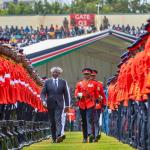Itai Dzamara, a prominent Zimbabwean journalist and pro-democracy activist, forcibly disappeared on March 9, 2015, while having his hair cut at a barber shop in Harare's Glen View suburb. This event marked the culmination of months of persecution following his public criticism of the government and his petition calling for then-President Robert Mugabe to resign.
Dzamara was a leader of the Occupy Africa Unity Square protest group, advocating for democratic reforms and criticizing Zimbabwe's economic decline. In October 2014, he submitted a petition to Mugabe's office, demanding his resignation and paving the way for elections. This act led to his interrogation and beating by police.
The abduction occurred just two days after Dzamara addressed an opposition rally, calling for mass action against Zimbabwe's deteriorating economic conditions. Despite a High Court order requiring police to investigate and report on their progress, authorities have failed to provide substantial information or comply fully with the order.
Dzamara's wife, Sheffra, has been left to care for their two children alone, facing immense emotional and financial challenges. She continues to demand answers about her husband's fate. The case of Itai Dzamara is classified as an enforced disappearance, a serious human rights violation that has been used to silence dissent in Zimbabwe.
The lack of investigation into Dzamara's disappearance has contributed to a culture of impunity, allowing similar human rights abuses to continue unchecked in Zimbabwe. Organizations like Amnesty International and Zimbabwe Lawyers for Human Rights continue to call for an independent investigation into Dzamara's disappearance, seeking justice and truth for his family.
The international community has been urged to pressure the Zimbabwean government to address human rights abuses and provide answers about Dzamara's fate. Despite the challenges, Itai Dzamara's legacy continues to inspire activism and advocacy for human rights in Zimbabwe and beyond. His disappearance serves as a stark reminder of the risks faced by those who dare to challenge oppressive regimes, and his story remains a powerful symbol of resistance and resilience.
Leave a comment
Your email address will not be published. Required fields are marked *




